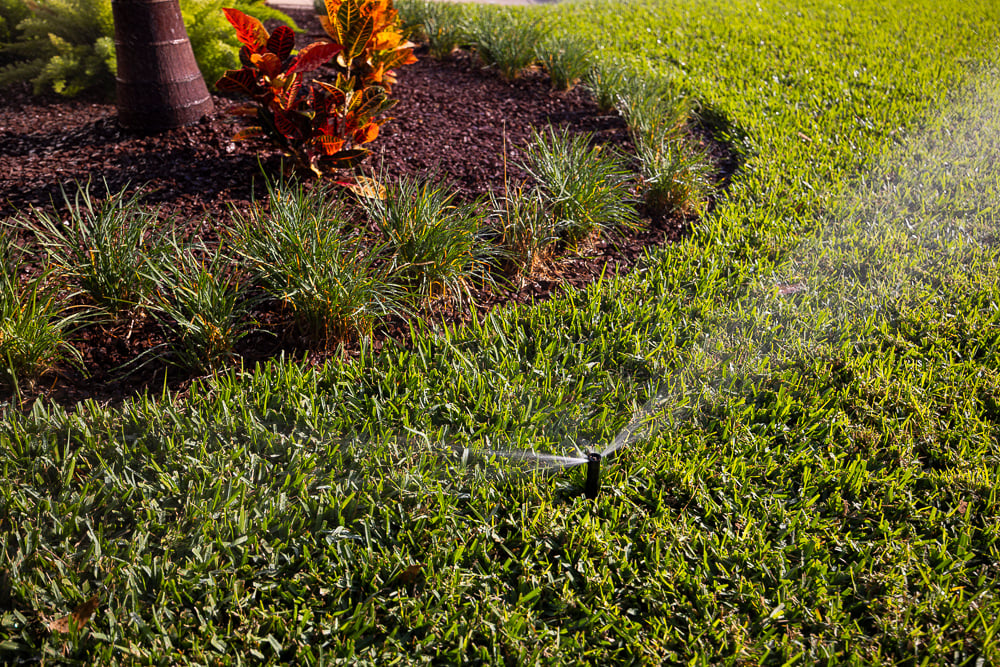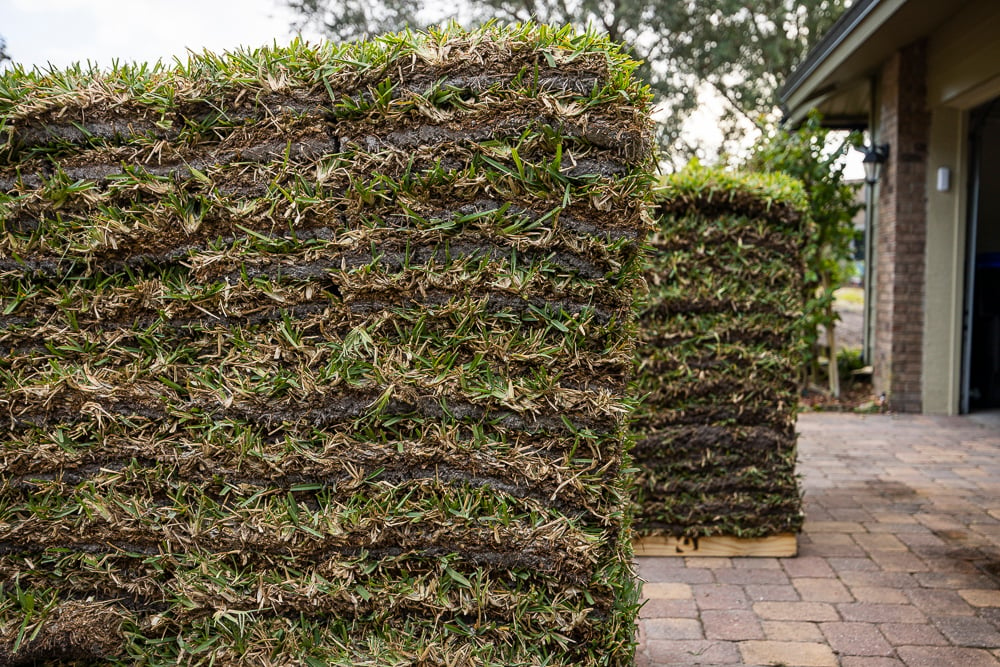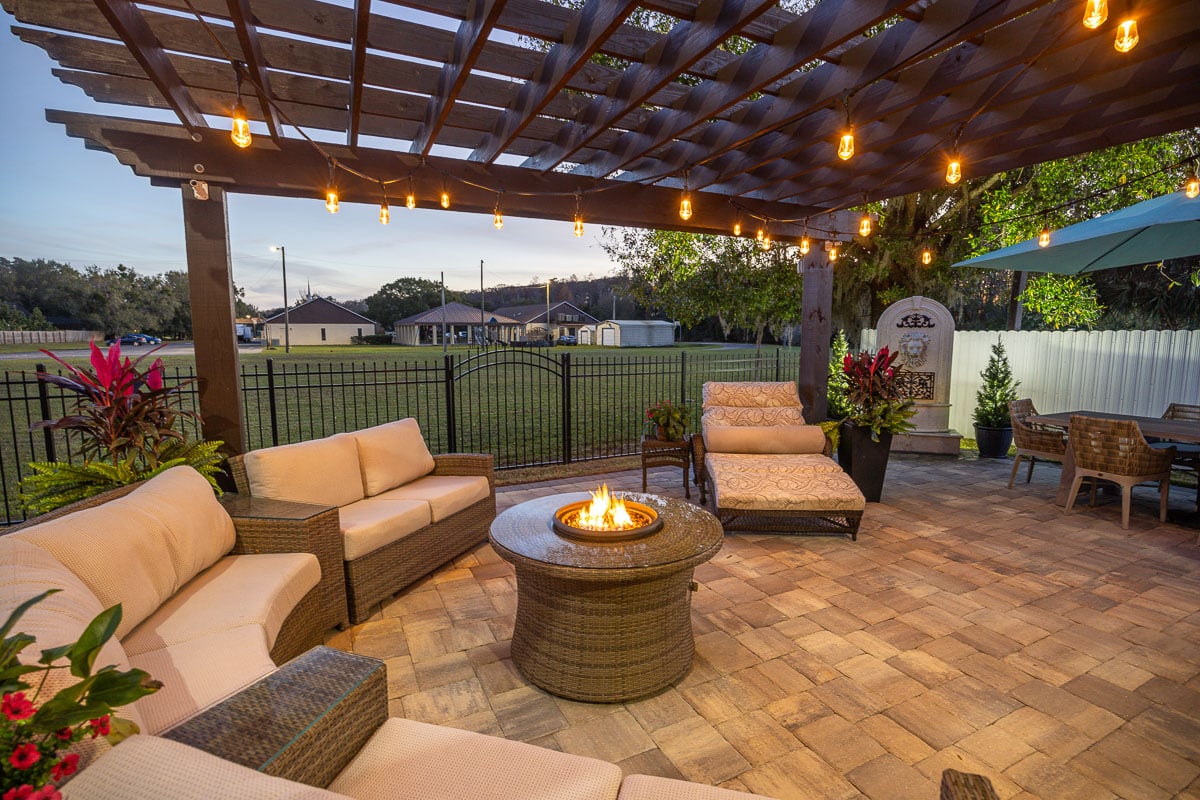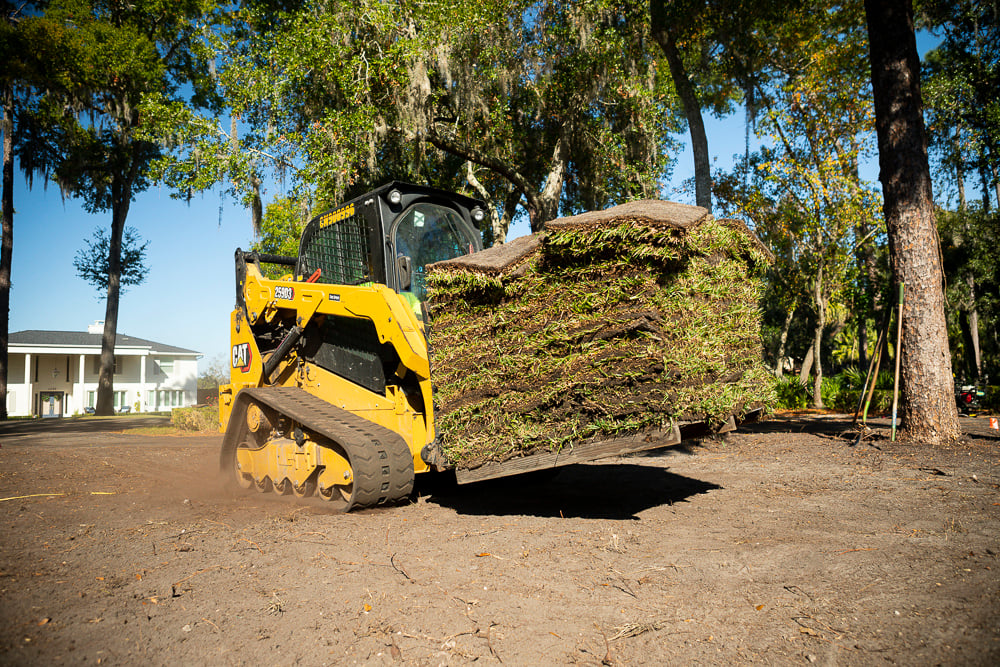Should you plant when it’s cool? Sunny? Hot? Rainy? In April? August? December?
When you’re planting in Central Florida, you could pick any of the above.
What’s the best schedule for installing new plants in Orlando? Is there an ideal Orlando planting calendar?
Jump to Section
- First, Know Your Planting Zone
- Timing for New Plants
- Are There Any Plants You Can Plant in Summer?
- Consider Container Gardening
- New Plants Need More Water Than You Think
- How to Tell When Plants Are Stressed
- Your Orlando Planting Schedule Should Always Include Mulch
- Ideal Planting Months for Orlando Sod
- Contact Us Early for Spring Planting Projects
“Honestly, plants can go in anytime,” says Eric Frisch, landscape designer for Ground Source. “I personally installed my whole landscape at my first house in the month of January, mostly because I had more free time and also because I didn't want to work in the heat.”
While Florida weather allows for year-round planting, spring and fall are considered the best times for planting. Heat-tolerant tropical plants are even happy planted in steamy summer weather, as long as they get enough water.
Keep reading to learn more about timing for new plants.
First, Know Your Planting Zone
What’s the best schedule for installing new plants in Orlando? Knowing your plant hardiness zone is helpful.
The U.S. Department of Agriculture created the Plant Hardiness Zone Map, a tool that helps determine which plants can thrive and survive in specific regions of the country.
The map divides the country into zones defined by their average coldest winter temperatures. The zones are divided in 10-degree increments and further subdivided into “a” and “b” sections, each representing a 5-degree Fahrenheit difference.
The map helps you choose plants that are most likely to survive the winter in your region. When you buy a plant at the garden center, its tag will tell you the hardiness zone information, so you know if it will survive in your Central Florida landscaping.
The USDA recently reclassified Orlando and most of Orange County from hardiness zone 9b to 10a - about a quarter zone warmer than before - after research showed that this area may not experience as cold winters as it used to. The 10a zone ranges from 30°F to 35°F in terms of its low temperature.
But Frisch still considers Orlando to be zone 9b, with several days each year below 35 degrees and the occasional 20-degree night — and he plants accordingly.
If you plant zone 10 or 11 plants here, Frisch says, you’re taking a risk.
“I planted some ti and croton plants in the winter and they did fine, but that's because it never got below 40 at the time I did it,” he says.
Timing for New Plants
Some plants that grow well here in Orlando don’t like the occasional
cold snap we can get here in the winter. When you’re landscaping in Central Florida, give them a break and don’t plant them during the coldest months.
They include tropical plants such as bougainvillea, crotons, and hibiscus, as well as herbs and tender flowering annuals.

“Plants that are cold-sensitive you might want to wait until February to plant just to avoid the risk of frost damage,” Frisch says. “That way the plants you get from the nursery have already made it through that period and recovered. The nurseries tend to protect their investment, so they cover certain plants when the cold comes.”
The last frost in Orlando usually happens in mid-February. You can generally plant most frost-tender plants after this date, but it's always a good idea to check the specific needs of the plant you're growing.
Are There Any Plants You Can Plant in Summer?
As Frisch noted earlier, you can generally plant year-round in Central Florida.
But if you install plants during the heat of summer, your best bet is to choose heat-tolerant plants.
Florida native plants, like muhly grass, coontie, milkweed, passion flower and Fakahatchee grass, are good bets since they’re automatically adapted to Florida's steamy climate.
However, other heat-loving plants also hold up well, including hibiscus, African iris, and blue daze.

Summer annuals like penta and lantana also love the heat.
However, when planting in Central Florida, try to do so during the cooler parts of the day. Shoot for early morning or late evening, when it’s cooler and there is less direct sunlight.
Consider Container Gardening
Planting in pots allows you to manage the intensity of the sun and relocate plants to shady areas as needed.
But containers dry out faster than plants in the ground, so irrigation is crucial. Drip irrigation can help.
Instead of pouring water from a container or spraying the plants with a hose, container drip irrigation uses small hoses pierced with tiny holes that allow small quantities of water to trickle slowly into the soil of your planters.
The hoses run up through the bottoms of your planters and tie into your irrigation system. Tiny emitters connected to the tubes water your plants, keeping them irrigated in the summer heat.
This method also conserves water, as it is applied directly and efficiently to the plants.
New Plants Require More Water Than You Think
No matter what time of year you’re planting in Central Florida, those new plants need plenty of water as the roots get established.
Your goal is to give them plenty of water at first, then gradually reduce watering as they become settled.
Water deeply, soaking the soil, every day for the first two weeks. The soil should remain moist throughout this period.

Water every other day for the next two to three weeks, gradually reducing the frequency of watering.
After those first few weeks of extra watering to establish new plants, you can settle into a normal watering schedule, based on the watering restrictions in place.
Luckily, new plants are exempt from watering restrictions at first.
Orange County lets you water new landscaping on any day at any time for the initial 30 days after installation, and then every other day for the next 30 days.
Water plants early in the day, before sunrise, if possible. You don’t want the hot sun to evaporate that valuable water before it reaches your plants.
How to Tell When Plants Are Stressed
Plants usually tell you when they need more water. Watch for signs of stress, such as leaves that curl, turn brown, or drop off.
Plants will tell you if they’re getting too much water, too. Watch for leaves that turn yellow, are limp and droopy, or are developing mold or mildew.
If the base of the plant stem feels soft and mushy, it could be due to root rot caused by overwatering.
Your Orlando Planting Schedule Should Always Include Mulch
Mulch is a multi-season multitasker, providing handy benefits no matter what time of year you plant.
In the summer, mulch helps your soil retain moisture, so you won't have to water as much. It also keeps weeds at bay and adds nutrients to your soil.

But it’s a winter worker, too. A 3-5 inch layer of the toasty stuff can help keep the soil temperature consistent and prevent it from freezing solid.
Choose pine bark or shredded hardwood bark for your Central Florida landscaping.
But if you don’t feel like lifting, bending, shoveling, and lugging heavy loads of mulch, hire the pros to do it for you.
Ground Source crews will weed and prepare your beds, remove faded old mulch and all the messy debris. They’ll create clean, crisp edges that look great. They won’t damage surrounding plants or nearby structures.
Importantly, they won’t add too much mulch, which is a common homeowner mistake.
Ideal Planting Months for Orlando Sod
Yes, we’re focusing on the Orlando planting calendar for plants here, but if you’re wondering about sod, Frisch has some advice:
Avoid planting sod during hurricane season, Frisch says, which typically spans from June 1 to November 30.
“Humidity and heavy rains are hard to deal with,” Frisch says. “Sod can't be over-watered or it will drown, so summer installs can make it hard to regulate watering, even with rain sensors on your timers.”
That’s especially true for shady areas, he says.
“Shade areas in summer are a huge no for sod because they just don't get time to dry out enough and let the roots breath a little,” Frisch says.
Contact Us Early for Central Florida Landscape Design
“I strongly recommend you contact us during the winter if you really want to have us do your project in spring,” Frisch says. “We get very busy in March, so if you want to beat the heat and rainy season, don't wait too long.”
It’s a complicated process, he notes, involving the design process, revisions, often obtaining HOA approval, and securing permits for jobs that include hardscape.
That all takes a couple of months, he says.
Hardscape is installed before plants, Frisch says, “so we need to have the permit and paver order in hand before we even start the demo and planting parts of the job.”
When to Plant in Orlando? Trust Ground Source
Puzzled by when to plant? Want to make sure your new plants thrive?

We’d love to help, with expert planting, landscaping and landscape design in Central Florida.
Are you ready to enjoy the vibrant, impressive yard you've always wanted? Request a quote today! We’ll help you review your options and then transform your property.






